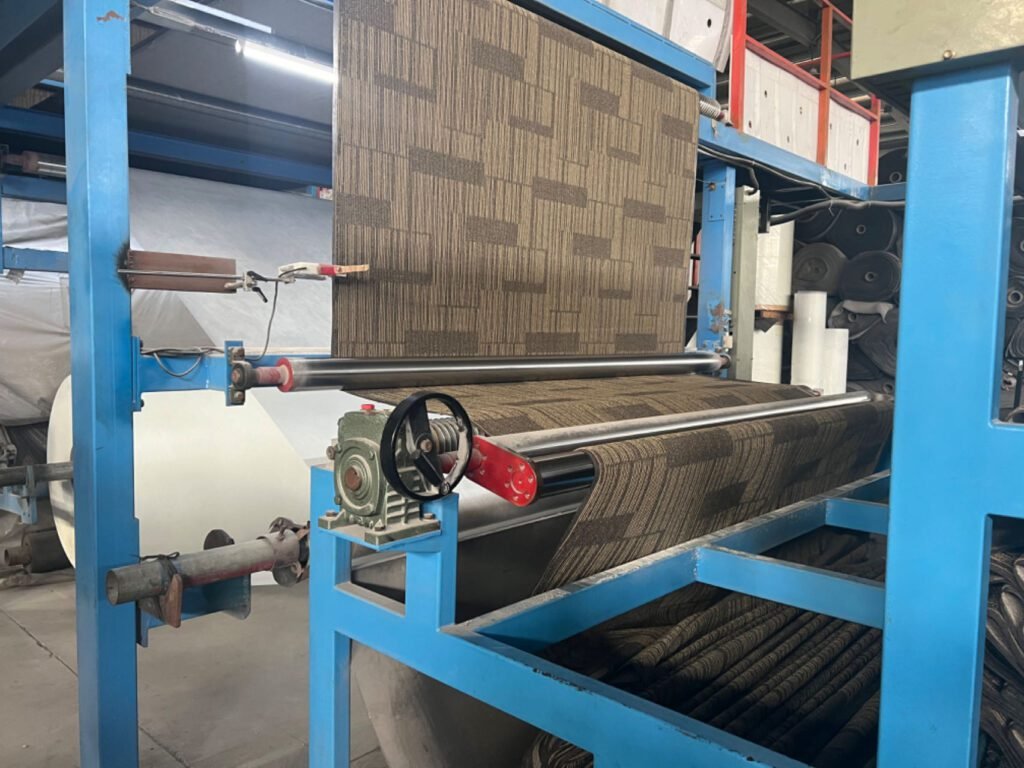♦️Material Introduction|INTRODUCTION
Carpet tiles, also called carpet tiles, are a type of carpet classified according to the laying method and shape specifications of the carpet.

♦️Material properties and characteristics|PERFORMANCE&CHARACTER
Carpet tile is a form of floor material. It is a soft paving material with good anti-slip and softness.
The large size reduces the small size for easy storage, loading and unloading, transportation and paving. Use small pieces to make big ones, and through creative combinations of different colors, patterns, and textures, patterns can be combined at will.
Update as needed anytime, anywhere, easy to maintain, clean and replace. For partially worn and dirty carpet tiles, just take them out one by one and replace or clean them.
It has significant moisture-proof performance, good flame retardant, antistatic properties and excellent dimensional stability and appearance retention.
♦️Product technology and classification|TECHNIC&CATEGORY
Carpet tiles are mainly divided into two types: polypropylene and nylon according to the material.
According to the technology, it is divided into polypropylene plain, polypropylene jacquard, nylon plain, nylon jacquard, etc.
According to the carpet backing, it is divided into asphalt bottom, PVC bottom, soft bottom, etc.
Soft-bottom carpet tiles have the characteristics of good elasticity, good foot feel, good sound and heat insulation effect, and are environmentally friendly.
♦️Common parameters|COMMON PARAMETERS
Fire performance: B1 level
Wear resistance: general professional use level (wear resistance 5,000 times)
Carpet tile weight: 3~ 6kg/m²
Carpet square specifications and sizes: generally 50cmx 50cm or 60cmx 60cm
The pile weight of square carpets is mostly 475~814g/m²
♦️Key points for construction and installation|KCONSTRUCTION INTRO
Square carpet paving has higher requirements for the base floor. The ground must be smooth and clean, with a moisture content of ≤8%. The gap from the bottom edge of the skirting board to the ground should be 2~3mm larger than the thickness of the carpet.
The ground requires a higher level of flatness
Choose a starting point. Develop a laying plan according to the space, and calculate it so that the last piece of carpet from the paving to the surrounding walls is guaranteed to have a certain width.
Pay attention to directionality. There are arrows printed on the back of each carpet, reflecting the same direction of tufting on the carpet surface. When laying, pay attention to follow the arrows to maintain the consistency of the direction, because even if the carpets are of the same color number and the same batch, only the laying direction is exactly the same. There will be no visual color difference
The blocks are tight. If the ground is flat and the four pieces at the starting point of paving intersect at one point, then any four pieces continued to be paved at the end should intersect at one point.
Profile cutting. Properly cut according to the shape of the wall and pillars to achieve a tight fit.
Fixing of open sides. When laying to doorways or other open edges, use carpet edge strips to close the ends.





